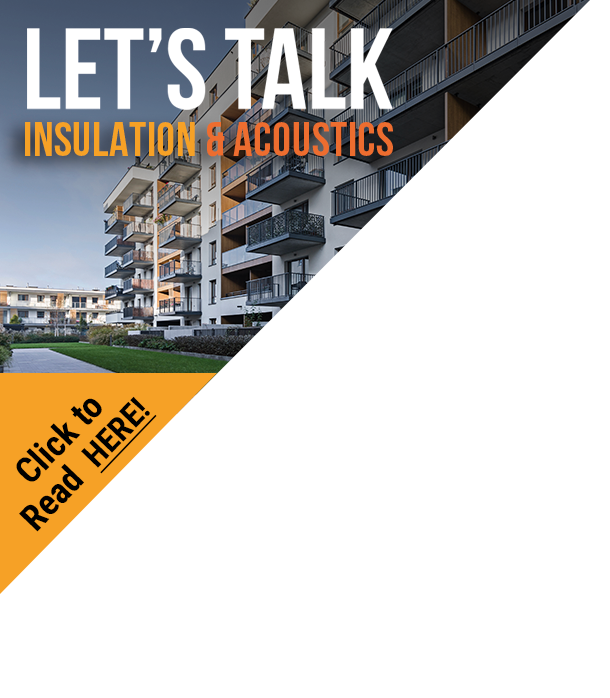The next decade promises to provide some monumental challenges to any organisation involved in the building envelope. In market terms it is difficult enough to predict the next 3 years never mind the next 10 years with the latest Construction Products Association (CPA) showing very little if any growth prospects across the industry to 2013.
The decade ahead will be slow to get off the ground in terms of growth. However, while there will be big changes in construction there will also be many opportunities for those companies and associations that embrace them. Construction activity will rely heavily on the performance of the new Government, legislation and the speed at which we pull out of the global recession. As we have some of the oldest building stock in the world much will need to be done to ensure we meet our promised targets for carbon reduction - near to 50% of all the energy we use heats our homes, public buildings and places of work. Despite the downturn, though, there are some real opportunities for entrepreneurial businesses in the coming years - for example all new houses built by 2013 and beyond must be carbon neutral.
The Council for Aluminium in Building (CAB) will be proactive in highlighting the opportunities available and the association is working closely with the supply chain to bring members and contractors closer together to better understand the current and future needs of the industry. In addition to a series of Regional breakfast meetings CAB is running a further Supply Chain conference entitled ‘Commitment to Supply Chains’ on the 23rd of September at the RBS Williams F1 Conference Centre in Oxfordshire. This will be the centrepiece of yet another year of innovative and value added events for CAB members.
As we enter swiftly into the second decade of the new Millennium the Council for Aluminium in Building is working on a multitude of major aluminium and sustainability projects which all rely on a high level of International collaboration. These range from a project with BRE to update Aluminium’s generic environmental profiles to being the UK gateway for the Environmental Product Declaration (EPD) tool produced by the European Aluminium Association (EAA).
CAB together with the other material trade associations is working towards a DEFRA product roadmap for windows. The roadmap addresses the lifecycle environmental impacts as well as the contribution of window systems to increasing the sustainability of buildings. CAB is also actively working with representatives of the worldwide Aluminium sector towards a Responsible Aluminium scheme. This aims to develop a credible and independently verifiable aluminium scheme that will seek to minimise impact and improve performance throughout the aluminium value chain, recognised by the industry and external stakeholders. Much of all this work builds on aluminium’s key messages.

Aluminium is the third most abundant element and the most plentiful metal in the Earth’s crust. It is most commonly present as ‘bauxite’, the ore from which primary aluminium metal is produced. Bauxite is a reddish mineral that is normally found about half a metre under the topsoil in a layer between three and five metres deep.
Plentiful, rich supplies of bauxite are available in Australia, West Africa and the West Indies along with other tropical and sub-tropical regions around the globe. Only around 10% of bauxite mining takes place in rainforests and it is estimated that out of 14,000,000 km2 of tropical rainforest less than 5 km2 is disturbed at any one time.
Known reserves of high quality bauxite are sufficient to provide over 300 years supply at current consumption levels and, with increasing levels of recycling, there is little possibility of exhausting the supply of this valuable ore.
Recycling aluminium in construction is very high according to a report completed by Delft University, up to 97% is often achieved, due in part, to the high value of scrap aluminium. This figure is much higher than that of aluminium can recycling which currently stands at 28%. Currently aluminium has one of the highest recycling rates of any material, in the decade ahead this will no doubt further increase.
The use of electrical energy to produce primary aluminium has been reduced since the 1880’s by 70%; it now takes just over 15 kWh to produce one kilogram of aluminium from alumina and this figure will continue to drop in the decade ahead. Recycling aluminium takes just 5% of the initial energy needed to produce ‘prime’ aluminium and importantly, recycled aluminium has exactly the same properties as prime aluminium - there is no loss of quality.
As we are still using over 75% of all aluminium ever produced since the 1880’s we have built up a bank of material which can be recycled at low rates of energy many times - the International Aluminium Association calls this ‘Aluminium for Future Generations’.
What is also impressive about aluminium is that you do not need to specify ‘recycled aluminium’ to be ‘green’. Over 50% of all aluminium currently used is recycled, if we all begin to specify recycled aluminium, there would not be enough to go round. As ‘prime’ and ‘recycled’ are essential the same quality of material, a specifier would on average be using 50% recycled content - just by specifying an aluminium component.
Specifiers and Clients are looking for information on everything from Carbon footprint to Environmental Product Declarations (EPD’s) to Global warming Potential for 100 years (GWP 100) to ecotoxicity. The list goes on. They want signs of not only ongoing attempts to improve but also a review of targets for various aspects of sustainability. In the aluminium sector this could be anything from recycling rates to land reclamation after mining.
The International Aluminium Institute (IAI) has produced the fourth (2008) in its series of Sustainable Bauxite Mining Reports which highlights global data on the environmental, social and economic impacts of bauxite mining operations and their rehabilitation programmes. One key finding was that over the 5 year period 2002-6, the average annual rehabilitation area of existing bauxite mining areas is equal to the average annual area being opened up. In this steady state environment, bauxite mining is ‘land area footprint neutral’ and sustainable. The report is downloadable at www.world-aluminium.org
Copies of the ‘Aluminium & Sustainability’ report are available as a PDF download from the CAB website or available in hardcopy from CAB members or CAB head office in Stonehouse.
CAB is available to offer guidance to specifiers on the use of sustainable aluminium in construction. CAB is always keen to emphasise the value of membership of the association, whether a company works with aluminium or is a provider to the supply chain. Further information about CAB can be found on CAB’s website at www.c-a-b.org.uk. or by contacting Julie Harley at the CAB offices on 01453 828851





















